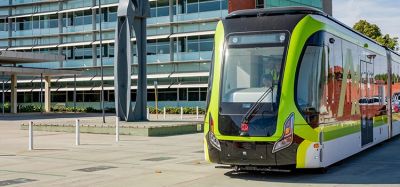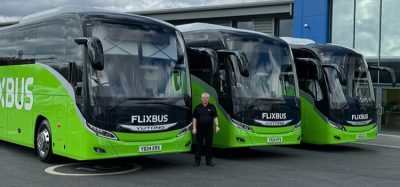Shuttles will account for 50 per cent of shared mobility market by 2030, says report
- Like
- Digg
- Del
- Tumblr
- VKontakte
- Buffer
- Love This
- Odnoklassniki
- Meneame
- Blogger
- Amazon
- Yahoo Mail
- Gmail
- AOL
- Newsvine
- HackerNews
- Evernote
- MySpace
- Mail.ru
- Viadeo
- Line
- Comments
- Yummly
- SMS
- Viber
- Telegram
- Subscribe
- Skype
- Facebook Messenger
- Kakao
- LiveJournal
- Yammer
- Edgar
- Fintel
- Mix
- Instapaper
- Copy Link
Posted: 22 August 2018 | Intelligent Transport | No comments yet
As urban mobility struggles with congestion and pollution, shared mobility modes are finding eager acceptance among commuters across the world.


Frost & Sullivan has revealed predictions that demonstrate how multimodality and intermodality are expected to accelerate the demand-responsive transit (DRT) market from $2.8 billion in 2017 to $551.61 billion in 2030, at a compound annual growth rate (CAGR) of 50.3 per cent.
Most of this growth is expected to stem from Europe and China. Similarly, the fleet size is expected to expand from 24,100 units to 5.8 million at a CAGR of 52.6 per cent during the same period, with Asia-Pacific accounting for more than 60 per cent of this share.
“Smart city initiatives, new mobility policies, government mandates and reduced private ownership of cars will result in DRT accounting for approximately 50 per cent of the shared mobility market by 2030,” said Ankita Mukherji, Mobility Research Analyst at Frost & Sullivan. “As the DRT sector expands, the multiplying synergies between its key players and the public transit agencies and operators will help it grow at 75.9 per cent between 2017 and 2030.”
Frost & Sullivan’s recent analysis, ‘Strategic Analysis of the Global Demand-Responsive Transit (DRT) Market, Forecast to 2030’, presents the trends in the service models of corporate shuttles, public shuttles (long-distance fixed, long-distance dynamic, short-distance fixed, short-distance dynamic) and chartered shuttles. By 2030, corporate shuttles and short-distance dynamic shuttles are expected to account for more than 60 per cent of the DRT market.
“Demand-responsive shuttles are modelled such that they are complementary to public transit; hence, public-private partnerships will be vital to widen the market and direct resources effectively,” continued Mukherji. “As the demand-responsive shuttle model is asset heavy, OEMs could benefit from operating shuttles in partnership with other service providers or through their own custom-built technology platform.”
Demand-responsive shuttles successfully address key challenges in the traditional transit models by offering the price benefits of public transit and the convenience of single-occupancy modes such as taxis. This service model has found varying degrees of acceptance in the five main regions of the world with Europe currently holding the biggest market for shared mobility and North America witnessing a large number of players experimenting with business models; expecting to see strong growth in the mid to long term.
In the Asia-Pacific region, demand-responsive shuttles constitute one of the biggest markets currently and will continue to substitute public transport. On the other hand, in Latin America the shuttles have to compete with already existing shared modes of transport, and in Africa, the potential market is even smaller, with low to medium opportunities for shuttle transportation.
The Strategic Analysis of the Global Demand-Responsive Transit (DRT) Market, Forecast to 2030 report is part of Frost & Sullivan’s global Automotive & Transportation Growth Partnership Service programme.
Related topics
Fleet Management & Maintenance, Multimodality, On-Demand Transport
Related organisations
Frost and Sullivan








